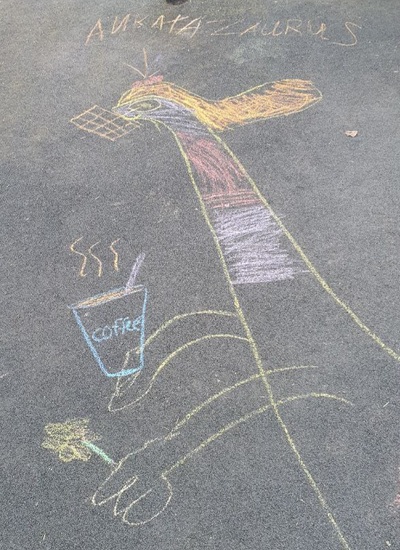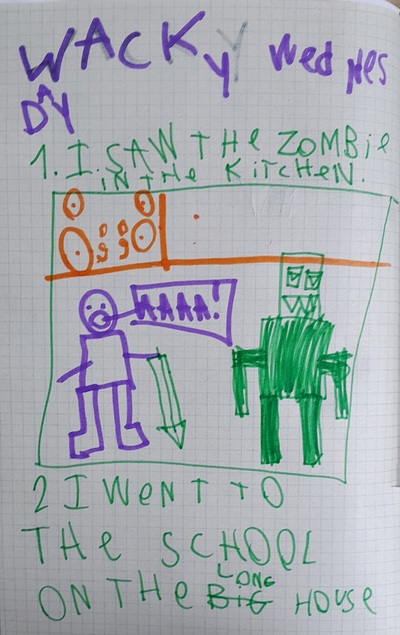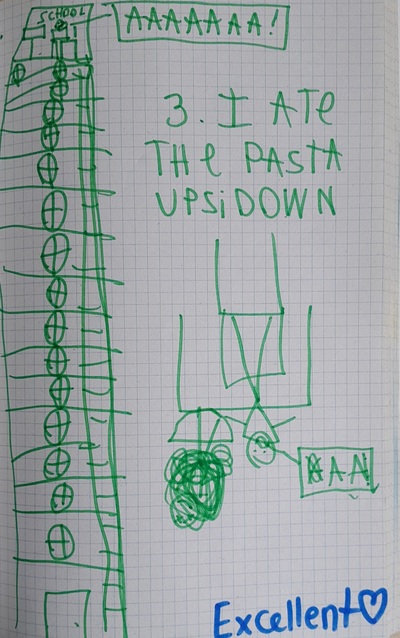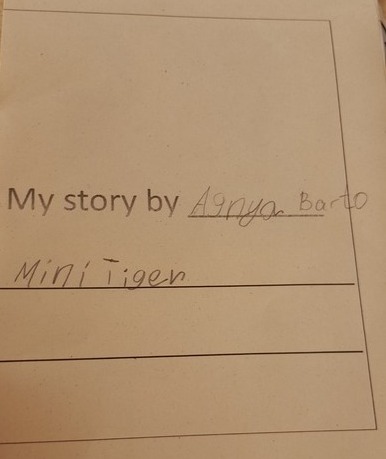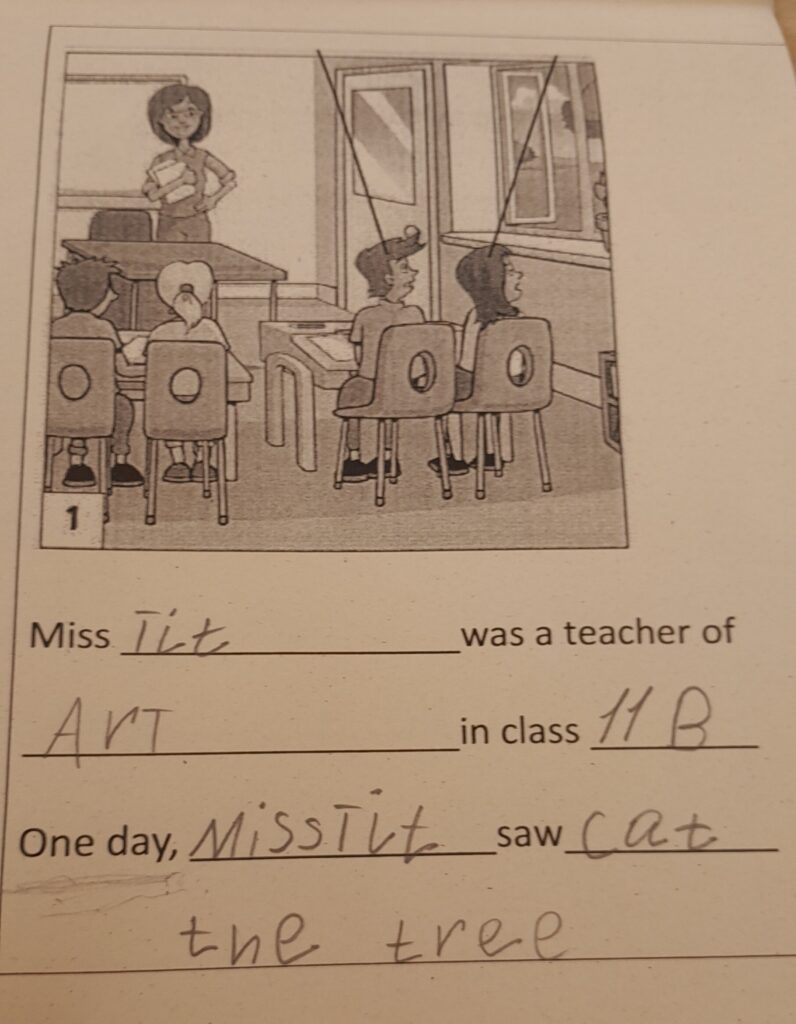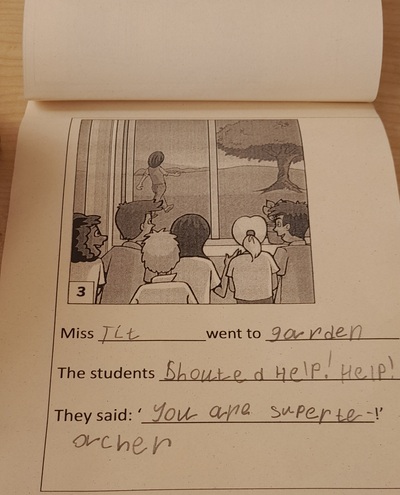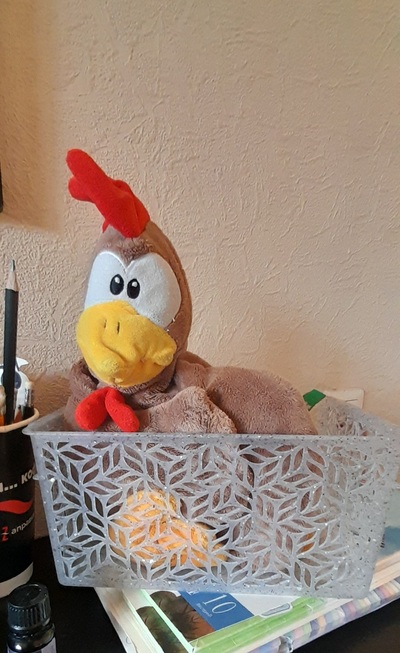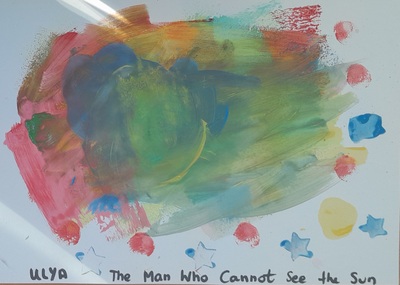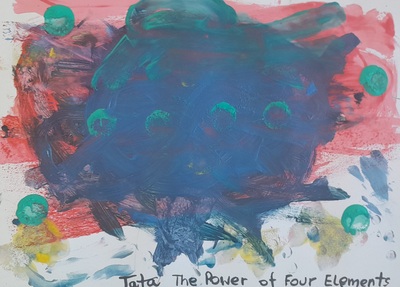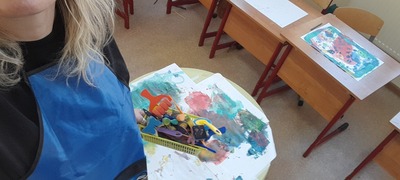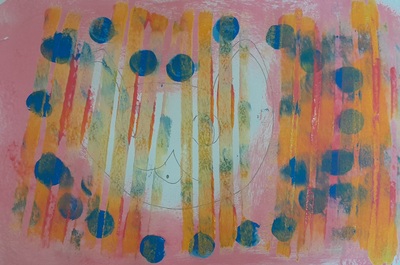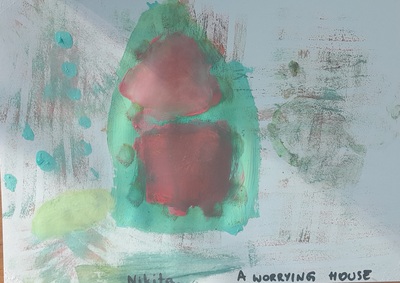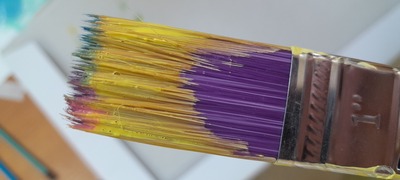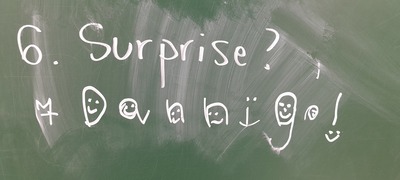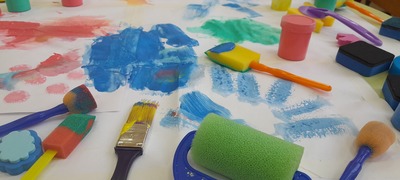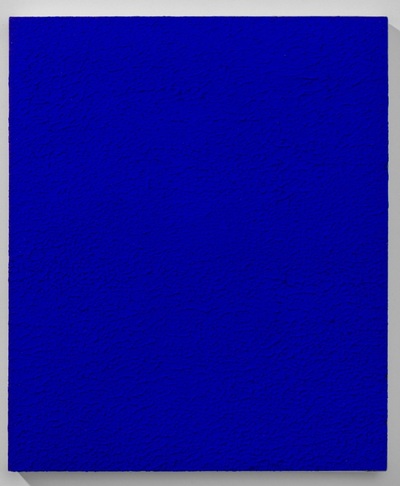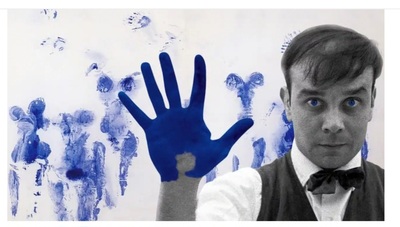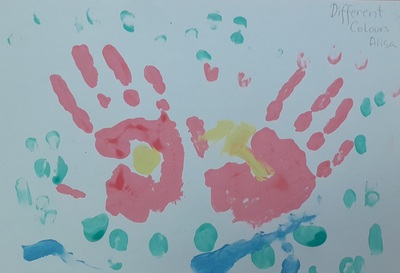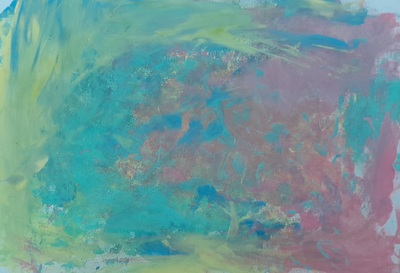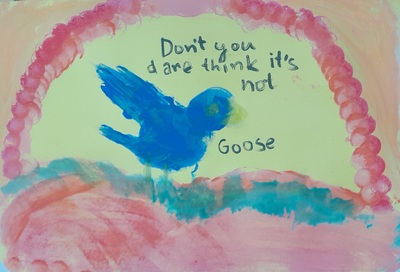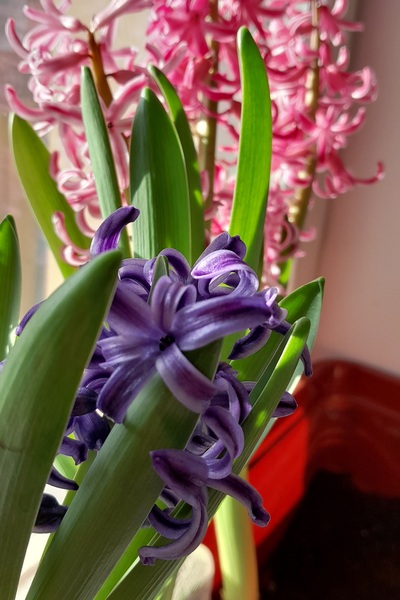
The language
We continue the topic of body parts. It might not be the first topic that comes to mind when you think about the alternative art or our artist of the week but I body vocabulary is exactly what we need now. This is why we continue practising body parts in songs and in our favourite game with the body action verbs that I described before here. All in all, the language was not our main focus in this lesson and only one of the sub-plots. But it will come in handy in the following month when we are going to concentrate on the human body in art.

The artist
I have decided that this month will be our Alternative April. I would like to take the Monochrome March a little bit further and after experimenting with the colour, we are going to play with the formats and approaches and this was our first lesson in the series.
Shantell Martin is the artist that I have found only recently because she popped up on my social media but it feels like I have known her for ages. I might have. After all, her prints and patterns are everywhere and it is quite likely that I saw her on t-shirts or walls. Now I got to put a name and a face to it.
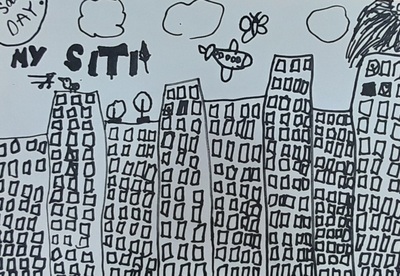
I was very curious how my students would react to her and they did not disappoint. They were curious, they looked at all the works with interest trying to interpret them and to find the words (a bonus task for reading in English!) and they really liked the fact that she is so young and that she is still alive and active. I think it is a signal for me to try to include more contemporary artists that we can connect with on one more level.
We looked at a variety of her works and talked about them a little bit, about these that we liked or really liked. We looked at different formats and modes she creates in and about her many interests that have an impact on the visual art.
However, our lessons last week had one more guest who made a cameo appearance and that was Paul Klee since he was the author of one of my favourite art quotes, namely, ‘A line is a dot that went for a walk’. I brought this up, together with the Bird and the Cat (that we re-created as a stained glass and that still makes our windows prettier). I also put a on display a lot of different types of lines as a source of inspiration.
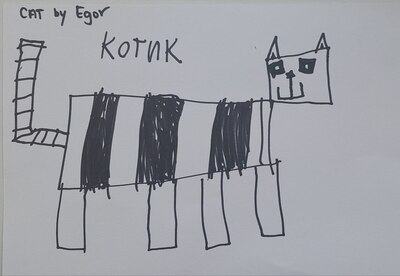
The art
Last week we worked on the A4 paper because I wanted to make sure that children have enough time to fill in the entire page. We also got a new tool – a black permanent marker, with two ends, a thick and a thin one for better results. The children were told to choose their own subject, their own types of lines and that they could combine words and lines, too.
As usual, I also showed the children how I experimented with Shantell’s style as I brought three small pieces of mine. Afterwards, we got down to work.
I know that it is easy for my readers to perhaps get an idea that I get excited for no reason or that I make everything look picture perfect for every post. I don’t. I get excited because my kids are so responsive and every lesson is a hit. It is not for everyone in the same way, it is not for everyone to the same extent but I sew and I reap.
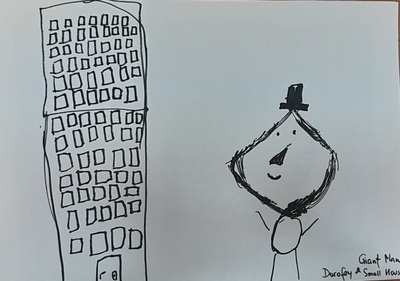
The most interesting thing is that the basic materials did not hinder my students’ creativity. We only had the black pen and the white paper but everyone got very creative and some of my students managed to create a few different pieces. We worked on ours, moved around the room a bit to look at what other students created and once something was ready, we would give it a title. You can see the amazing pieces all around the post here. The lesson took place about a while ago but only now could I take photos of everything. I am revisiting this lesson after three weeks, I am looking at their pieces and, again, I am amazed and I am proud.
Shantell’s lesson was one of those days when I ‘lose’ most of the artwork. Not because I am forgetful or clumsy but because my students behave like real artists and they find it hard to part with their precious creations. It is easy to spot when it is about to happen because they carry them around everywhere and then, when I ask ‘Can I put it on display?’, the answer is short and simple: ‘No!’. On a good day I get to photograph what they have created and I am head over heels that I can do that, at least.
What I like about this particular artist and activity is that it could be easily adapted to any of the topics in a regular EFL kids lessons and now I have a lot of evidence to prove that from my students since they created their pieces on the topic of emotions, places in the city, fairy tales, animals and transport. And the materials are very easy to get)))
Here are some pieces created by my students:

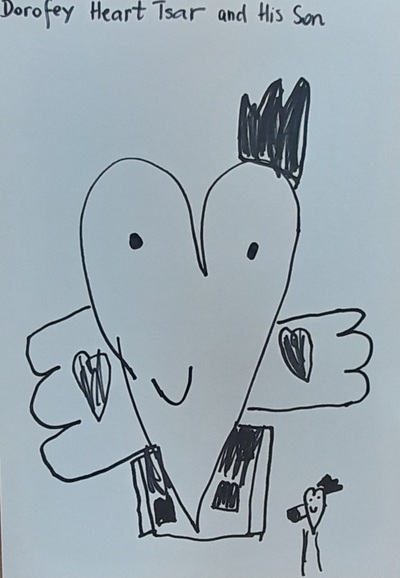
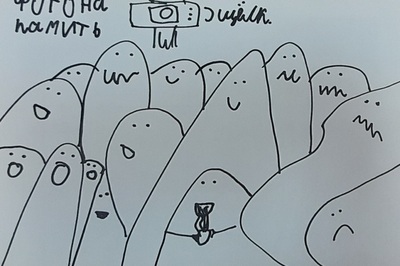
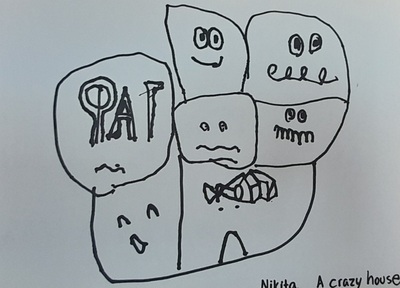
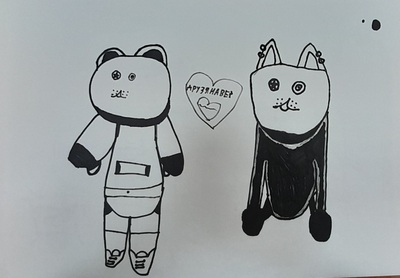



Happy teaching!

